Best Mac buying guide 2021
If you’re wondering which Mac to buy, you’ve come to the right place. In our 2021 buying guide you’ll find everything you need to know about the MacBook Air, MacBook Pro, Mac mini, iMac, iMac Pro and Mac Pro, with expert buying advice to help you choose the machine (and configuration) that’s right for you.
Apple makes five different types of Mac, and within each of those categories there are variations in the size, specs and features, so things can get pretty complicated. That’s where this complete guide comes in, helping you make the right decision. If you’re simply looking for a great offer, visit our MacBook Pro deals, MacBook Air deals, iMac deals and Mac mini deals pages.
Before we begin: Apple has begun transitioning all its Macs from Intel processors to its own Apple Silicon processors based on ARM. These new Macs have a new processor called the M1 and so far the Mac mini, MacBook Air and some MacBook Pro models have made the move. The transition will continue for the next two years, with more and more Macs moving to Apple’s own processors.
So by about June 2022 there will be no more Intel Macs sold by Apple. If you want to know more about what this means, read our guide to Apple Silicon, as well as how Apple Silicon will compare to Intel, we also have an article explaining just how good the M1 processors are.
If you want to know if this means that buying a new Intel Mac now is a bad idea, read Should I buy an Intel Mac? You may also like to read Should I buy new Mac now?
The current Mac range in brief
Let us first take you through each Mac that is currently available from Apple, to give you an overview of what’s on offer and what you’ve got to choose from.
Mac laptops
MacBook Air
13in screen
Processor: M1 chip
From £999/$999
Pros: Cheapest and lightest Apple laptop; Touch ID fingerprint sensor; great value for money (especially now Apple’s dropped price of mid-range model)
Cons: Only two ports (both USB-4/Thunderbolt)
Latest review: M1 MacBook Air (2020)
Best for: Students; home users
Last updated: November 2020
When to buy: Now
Where to buy: Apple (UK store or US store), KRCS, Amazon, AO.com, Ebuyer, John Lewis, and Currys PC World.
Jump to the MacBook Air section for best prices and more info
13in MacBook Pro
13in screen
Processor: M1 chip for entry level, Intel 10th gen quad-core
From £1,299/$1,299
Pros: Touch Bar
Cons: More expensive than the Air
Latest review: 13in MacBook Pro (mid 2020) review
Best for: Office and home workers
Last updated: November 2020 for M1/May 2020 for Intel
When to buy: Now for the M1 models, hold off for replacements for the 2.0GHz models in or before June
Where to buy: Apple (UK store or US store), KRCS, Amazon, AO.com, Ebuyer, John Lewis, and Currys PC World.
Jump to the 13in MacBook Pro section for best prices and more info
16in MacBook Pro
16in screen
Processor: Intel 9th gen 6- & 8-core
From £2,399/$2,399
Pros: Discrete graphics; bigger screen; 16GB RAM as standard
Cons: Heaviest MacBook available; 9th generation processors
Latest review: MacBook Pro 16in (2019) review
Best for: Anyone who needs power on the go
Last updated: November 2019
When to buy: Not now unless you can’t wait until later in 2021
Where to buy: Apple (UK store or US store), KRCS, Amazon, AO.com, Ebuyer, John Lewis, and Currys PC World.
Jump to the 16in MacBook Pro section for best prices and more info
Mac desktop computers
Mac mini
No screen
Processor: M1 on 2020 models, Intel 8th gen 6-core on 2018 model
From £699/$699
Pros: Cheapest Mac (now even cheaper); small desktop option
Cons: No screen; no keyboard or mouse; no option for discrete graphics (other than plugging in a eGPU – and that is only possible for the Intel model)
Best for: Those who need a Mac on a budget; developers
Latest review: 2018 Mac mini review
Last updated: November 2020
When to buy: Now (for M1 models)
Where to buy: Apple (UK store or US store), KRCS, Amazon, AO.com, Ebuyer, John Lewis, and Currys PC World
Jump to the Mac mini section for best prices and more info
21.5in iMac
21.5in 4K screen (except at entry level)
Processor: Intel 7th gen dual-core on entry-level model, Intel 8th gen 4- & 6-core on others
From £1,099/$1,099
Pros: All-in-one
Cons: Not portable; avoid entry-level model
Best for: Offices
Latest review:iMac 21.5in (2019)
Last updated: August 2020 (but this was a minor upate to the 2019 model)
When to buy: We suggest waiting until spring/summer 2021 when new design and the Apple processor may arrive
Where to buy: Apple (UK store or US store), Currys, KRCS, Amazon, AO.com, Ebuyer and John Lewis.
Jump to the 21.5in iMac section for best prices and more info
27in iMac
27in 5K screen
Processor: Intel 10th gen 6- & 8-core
From £1,799/$1,799
Pros: Powerful; big screen; all-in-one
Cons: Not portable; can get very expensive if you choose to upgrade
Best for: Designers; video editors
Latest review: 27in iMac (2020)
Last updated: August 2020
When to buy: Now
Where to buy: Apple (UK store or US store), Currys, KRCS, Amazon, AO.com, Ebuyer and John Lewis.
Jump to the 27in iMac section for best prices and more info
iMac Pro
27in 5K screen
Processor: Intel 10-core Xeon W processor
From £4,999/$4,999
Pros: Space Grey design
Cons: Very expensive; due an update
Best for: Professional designers; video editors; others requiring huge amounts of rendering/processing power from their Mac; those who need the ultimate in power, but the Mac Pro would be overkill
Latest review: iMac Pro review
Last updated: December 2017 (minor update in August 2020)
When to buy: We think Apple will update it soon – if not look at the high-end standard iMacs
Where to buy: Apple (UK store or US store), KRCS, John Lewis, Currys
Jump to the iMac Pro section for best prices and more info
Mac Pro
No screen
From From $5,499
Pros: Extremely powerful; expandable
Cons: Astronomically expensive
Best for: Professional video editors and animators; studios; others requiring huge amounts of power from their Mac
Latest review: Mac Pro (2019)
Last updated: December 2019
When to buy: Now
Where to buy: Apple (UK store or US store), Currys, KRCS
Jump to the Mac Pro section for best prices and more info
MacBook Air
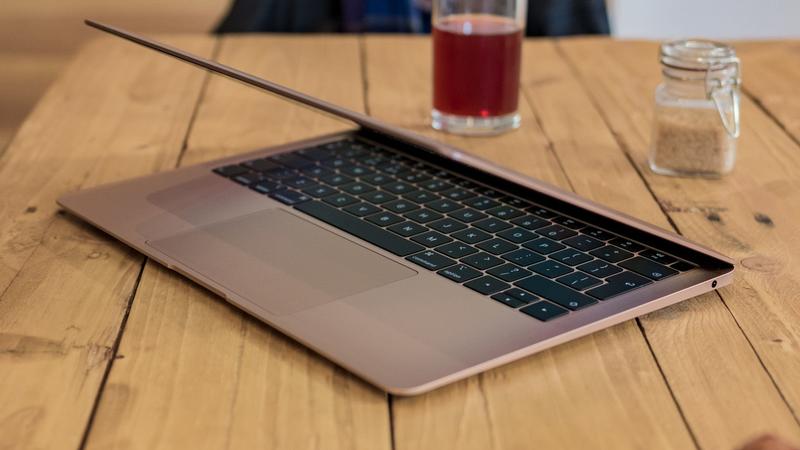

Last updated: November 2020
Price: From £999/$999
The MacBook Air is the thinnest and lightest Mac laptop as well as the cheapest of Apple’s laptops. It is a popular choice and rightly so.
The Air was updated in November 2020 – for the second time in a year. This was a significant update: Apple began its transition to its own processors and the Air was one of the first Macs to gain a M1 chip. There are two MacBook Air models: one has an M1 8‑Core CPU and 7‑Core GPU with 256GB storage, the other has an M1 8‑Core CPU and 8‑Core GPU with 512GB storage. Apple also dropped the price of the 512GB model by £100/$100.
The MacBook Air represents great value for money, and the M1 processor is surprisingly speedy on what is traditionally thought of as a less powerful Mac option.
Who is the MacBook Air best for?
The MacBook Air is perfect for anyone who needs to carry their laptop with them, especially students, commuters, and hotdeskers.
Because it’s so slim it’s also a great option if you want a Mac to use at home or at work that doesn’t take up a whole lot of space. You can always plug it into a monitor on your desk, or even plug it into a TV screen (via an adapter) if you feel you would benefit from a bigger display.
MacBook Air specs
There are two standard MacBook Air models available. The specs are as follows:
£999/$999 MacBook Air:
Apple M1 Chip with 8‑Core CPU and 7‑Core GPU
16-core Neural Engine
256GB Storage
8GB unified memory (configurable to: 16GB)
£1,249/$1,249 MacBook Air:
Apple M1 Chip with 8‑Core CPU and 6‑Core GPU
16-core Neural Engine
512GB Storage
8GB unified memory (configurable to: 16GB)
There are also various build-to-order options (a faster processor, 16GB RAM, 1TB of 2TB SSD), if you want more speed or storage and your budget can stretch.
You get a Retina display with a 2K resolution, an improved keyboard and a Force Touch trackpad. You’ll also find Touch ID incorporated into the keyboard, so you can use your fingerprint to sign in and verify purchases.
The MacBook Air is not the fastest Mac laptop you can buy, but whether that matters depends a lot on what you will be doing with it, and what your priorities are when looking for a new Mac.
If the majority of what you do on your Mac is everyday tasks, such as sending and receiving email, browsing the web, and using office applications, the MacBook Air is quite capable of meeting your needs. Even beyond that kind of use, you can happily use the Air for editing short videos, or for working with photos from your iPhone or point-and-shoot camera.
The MacBook Air offers 18 hours of battery life for video playback, or 15 hours for typical use.
The MacBook Air does not have an Ethernet port: in fact it’s limited to two Thunderbolt 3 / USB 4 ports (one of which will need to be used for power, if you want to charge) and a headphone jack.
Should you buy a MacBook Air now or wait?
Apple updated the MacBook Air in November 2020. It was a significant update and now features Apple’s M1 processors. It’s a good time to buy as long as you are prepared to be an early adopter of a new technology. If you’d prefer to stick with an Intel MacBook Air you may still find some available – check prices below for the best MacBook Air deals right now.
If you like the MacBook Air, but think it’s a bit above budget, read our article about how to get a cheap Mac and take a look on the Apple refurbished store to see if Apple has any cut-price Macs. We have an article dedicated to Why you should buy a refurbished Mac.
Intel 1.4GHz MacBook Pro
13in MacBook Pro
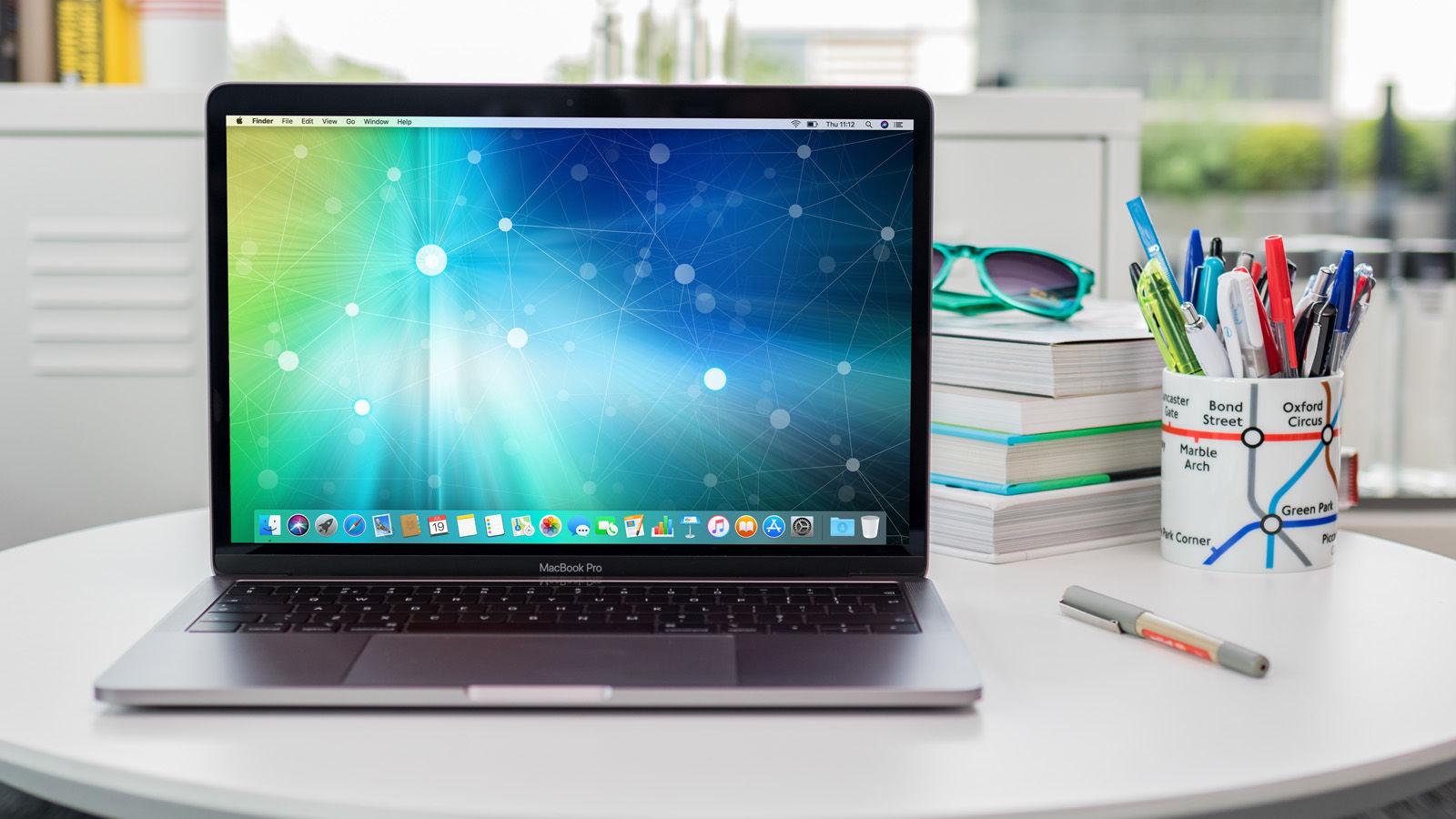

Last updated: November 2020 for M1/May 2020 for Intel
Price: From £1,299/$1,299
Here are the latest 2020 13in M1 MacBook Pro Deals:
Here are the latest 2020 13in 2.0GHz MacBook Pro Deals:
Apple updated the 13in MacBook Pro in November 2020 when it furnished the two entry-level models with the M1 rather than Intel processors. The two mid-range 13in MacBook Pro that Apple introduced in May 2020 feature 10th generation Intel processors.
All 13in MacBook Pro models have the new Magic Keyboard, which replaces the problematic keyboard design of the older models.
There is also a larger 16in MacBook Pro which we will discuss in the next section. Before we discuss the differences between the different sized MacBook Pro models, there are some significant differences between the four 13in models. Most obviously the cheaper MacBook Pro have Apple’s own M1 chips, while the other models have Intel processors.
At a glance it’s hard to compare the M1 and Intel – Apple doesn’t refer to GHz so we can’t do a straightforward speed comparison, and while the M1 offers 8-core CPU and GPU to the Intel’s quad-core processors and integrated graphics, it doesn’t necessarily follow that 8-cores is better than 4-cores. For now, the simple fact that Apple charges more for the Intel models, and that it still sells them, should indicate that they are more powerful, but we’ll be testing them to find out.
The other comparison is with the Air that we discussed above. As the Pro part of the name suggests, this is generally a more powerful machine than the MacBook Air. However, there is quite a small gap between the MacBook Air and the MacBook Pro models that share the M1 chips. The most notable differences are that the Pro offers longer battery life, the Touch Bar, a brighter display, and better speakers. The entry-level MacBook Air has only a 7-core GPU, while the MacBook Pro and the other MacBook Air both have 8-core GPUs.
Suffice to say there is little to differentiate the £1,299 MacBook Pro from the £1,249 MacBook Air.
The MacBook Pro is also heavier than the MacBook Air, although still reasonably svelte – the Pro series benefited from a slimming-down redesign in 2016.
The MacBook Pro features four Thunderbolt/USB-C or two USB-4 ports depending on the model – the M1 model offering the newer USB-4 option (the Air has two USB-4 ports).
Only the MacBook Pro features the Touch Bar. This feature, a unique selling point of the Pro line, provides users with contextual controls depending on the app they’re using at the time – for example, in Safari it’ll offer shortcuts to your favourite websites. We tend to think the Touch Bar is more of a gimmick than a useful addition (it’s not even particularly intuitive to use – we often find ourselves reaching to touch the screen instead) but it’s worth trying it out in an Apple Store to see if you like it.
Both the MacBook Air and MacBook Pro incorporate a Touch ID fingerprint scanner into the power button.
Who is the 13in MacBook Pro best for?
The 13in MacBook Pro is a great choice for Mac users looking for a little more power and great battery life from a laptop. We think the MacBook Pro is perfect for anyone who needs a powerful laptop that they can carry around all day without damaging their back.
As to whether you should buy a 13in MacBook Pro or the 16in model (which we will discuss next), this depends foremost on what you will be using it for, and secondly on how often you will be carrying the laptop around. If what matters most to you is having a laptop that is light enough to carry with you, then the 13in will suit you – although we’d suggest that you look to the MacBook Air range. If you need powerful graphics and a big screen then the 16in will be more suited to you.
If you’ve already got a Mac and are looking to sell, read Which Mac do I have? and How to check your Mac’s tech specs.
13in MacBook Pro specs
There are four 13in MacBook Pro models. You can then add further build-to-order (BTO) options and upgrades if you’re willing to spend more.
The two entry-level 13in models have Apple’s M1 8-core CPU and 8-core GPU, while the mid-range models have Intel’s 2.0GHz 10th-gen quad-core processors. The 2.0GHz 13in models also offer 16GB of RAM and a 32GB BTO option, while the M1 models ship with 8GB as standard with a 16GB BTO option.
Here’s how the specs line up:
£1,299/$1,299 MacBook Pro:
Apple M1 Chip with 8‑Core CPU and 8‑Core GPU
16-core Neural Engine
256GB Storage
8GB unified memory (configurable to: 16GB)
£1,499/$1,499 MacBook Pro:
Apple M1 Chip with 8‑Core CPU and 6‑Core GPU
16-core Neural Engine
512GB Storage
8GB unified memory (configurable to: 16GB)
£1,799/$1,799 MacBook Pro:
2.0GHz Quad-Core Processor with Turbo Boost up to 3.8GHz
512GB Storage
16GB 3733MHz LPDDR4X RAM
Intel Iris Plus Graphics
£1,999/$1,999 MacBook Pro:
2.0GHz Quad-Core Processor with Turbo Boost up to 3.8GHz
1TB Storage
16GB 3733MHz LPDDR4X RAM
Intel Iris Plus Graphics
The MacBook Pro doesn’t offer USB-A or an SD card slot. The two entry-level models have two Thunderbolt/USB-4 ports while the other models offer four Thunderbolt/USB-C ports; thus, a single port can handle charging, data transfer, A/V and more but requires an adapter to use legacy accessories.
Like the MacBook Air, the MacBook Pro doesn’t feature a Ethernet port, but the new M1 models do offer 802.11ax Wi‑Fi 6 (the more expensive models, and the Air still offer 802.11ac Wi‑Fi). If you need to plug into a wired network you will be able to purchase an adaptor separately.
Should you buy a 13in MacBook Pro now or wait?
Apple introduced the M1 MacBook Pro in November 2020 so, assuming you are happy to be an early adopter of new technology, now is a good time to buy one. As for whether to buy the Intel 13in MacBook Pro models, those were updated in May 2020 and we still recommend them some months later. Apple’s unlikely to update the processor in these models until spring or summer 2021. Check out the latest deals below, alternatively we have even more MacBook Pro deals here.
If you want to buy one of the older 1.4GHz MacBook Pro models you may see a deal below:
16in MacBook Pro
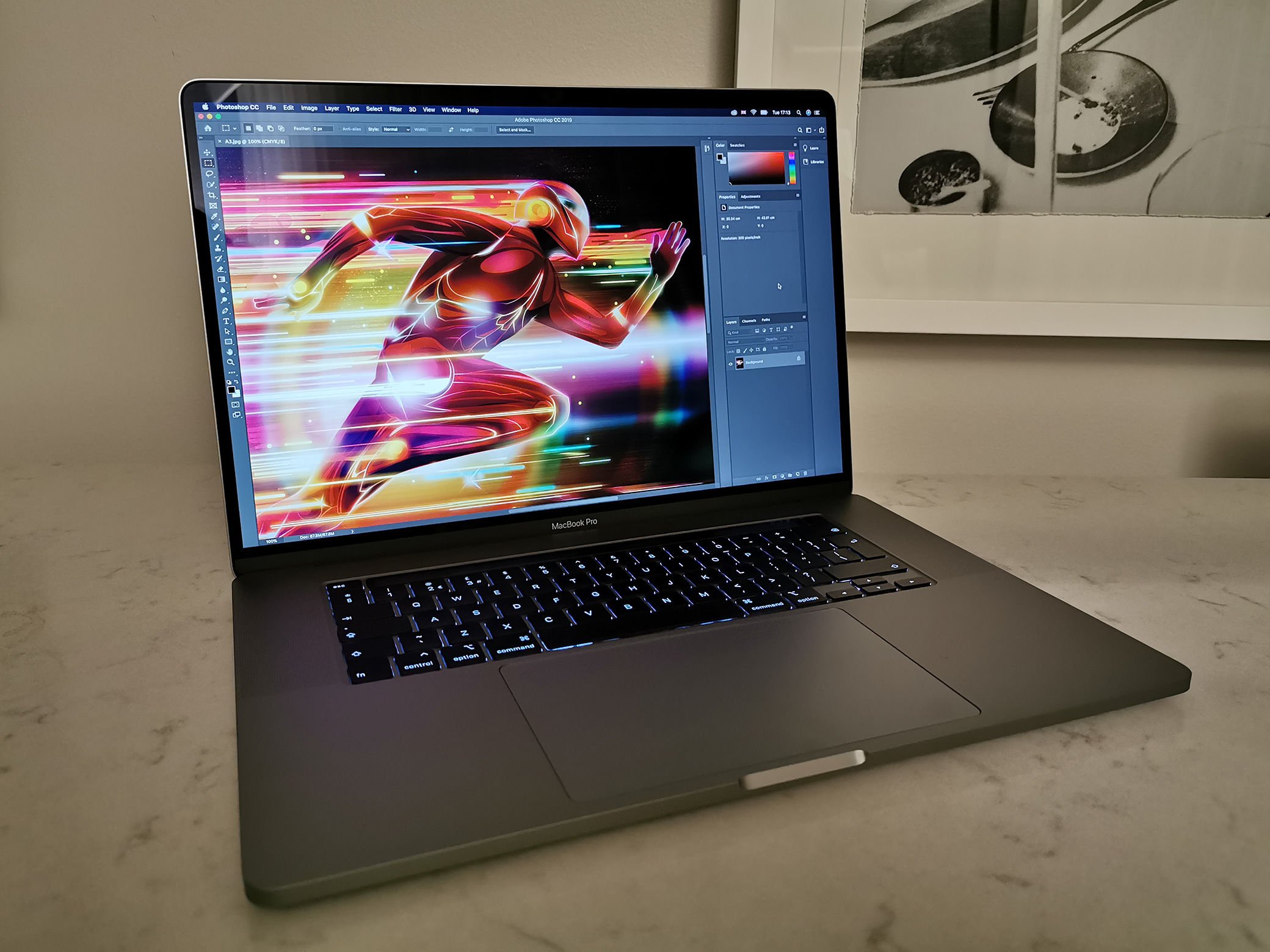

Last updated: November 2020 for M1/May 2020 for Intel
Price: From £2,399/$2,399
Here are the latest 16in MacBook Pro Deals:
Apple updated the larger MacBook Pro model in November 2019, replacing the 15in model with a slightly larger 16in MacBook Pro. It’s that model we are looking at here.
In the case of the 16in MacBook Pro the Pro part of the name is very deserving – perhaps more than it is on the 13in models. This really is a powerful machine.
As you would expect the 16in MacBook Pro is heavier than the 13in model, although still reasonably svelte.
The 16in MacBook Pro features four Thunderbolt/USB-C ports and like the 13in model it features the Touch Bar. This feature, a unique selling point of the Pro line, provides users with contextual controls depending on the app they’re using at the time – for example, shortcuts for Final Cut Pro or Photoshop.
The biggest difference between the 13in and 16in MacBook Pro is the inclusion of discrete graphics in the larger model – a clear indicator that this is a machine targetted at creative pros and those who will benefit from a more powerful machine.
Who is the MacBook Pro best for?
The MacBook Pro is a great choice for creative pros and Mac users looking for more power from a laptop.
The main selling points are the high-res screen, powerful processors, discrete graphics, and the fact that you get all that in a laptop. With some of the best Speedmark scores of any Mac the 16in models are capable of pretty much anything.
Battery life is up to 11 hours, which should suffice for daily use. If you need more than that then the new M1 models offer 20 hours battery life.
If you’re wondering whether an iMac might suit you better because it has a bigger screen, remember you can always plug the MacBook Pro into a large monitor and use that when you’re at your desk.
MacBook Pro specs
There are two 16in MacBook Pro models with further build-to-order (BTO) options and upgrades if you’re willing to spend more.
The 16in models offer 9th-gen 2.6GHz 6-core and 2.3GHz 8-core processors and 16GB of RAM.
Here’s how the specs line up:
£2,399/$2,399 16in MacBook Pro:
2.6GHz 6-core 9th-generation Intel Core i7, Turbo Boost 4.5GHz
AMD Radeon Pro 5300M with 4GB of GDDR6 memory
16GB 2666MHz DDR4 memory
512GB SSD storage
£2,799/$2,799 16in MacBook Pro:
2.3GHz 8-core 9th-generation Intel Core i9, Turbo Boost 4.8GHz
AMD Radeon Pro 5500M with 4GB of GDDR6 memory
16GB 2666MHz DDR4 memory
1TB SSD storage
If you’re interested in the build-to-order options: there’s up to 64GB of DDR4 RAM, Radeon Pro 5300M or 5500M discrete graphics with 4GB of video memory (upgradable to 8GB) and up to 8TB of SSD storage available.
The MacBook Pro doesn’t feature a Ethernet port, but it does have built-in 802.11ac Wi-Fi. If you need to plug into a wired network you will be able to purchase an adaptor separately.
Should you buy a MacBook Pro now or wait?
The 16in models were introduced in November 2019 so we’d suggest waiting as we think Apple might boost the processors soon – perhaps before the end of 2020. Check out the latest deals here: MacBook Pro deals here.
Mac mini
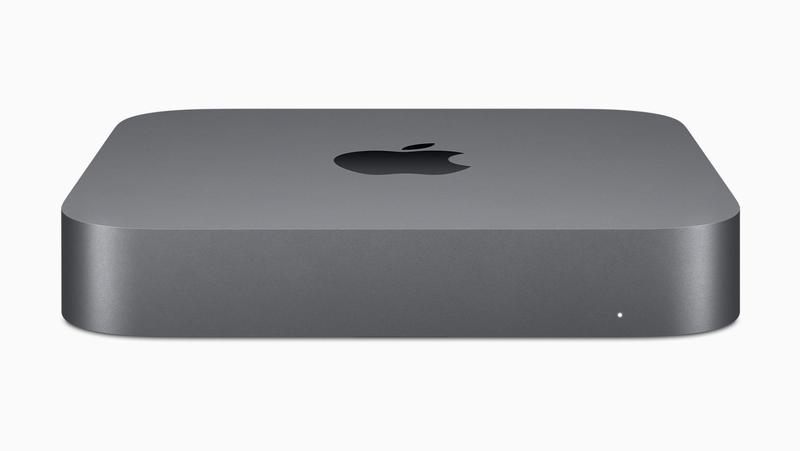

Last updated: November 2020
Price: From £699/$699
Here are the latest 2020 M1 Mac mini Deals:
Here are the latest Intel Mac mini Deals, normally £1,099:
The Mac mini is Apple’s compact desktop computer first introduced in 2005. It’s also Apple’s cheapest Mac, starting at just £699/$699 (although it did used to be cheaper than that – when the 2014 model launched it cost just £399/$499). The mini used to be Apple’s least powerful Mac, but the latest iteration has a lot more oomph than previously.
Apple updated the Mac mini in November 2020 when it added the M1 chip to two models, while keeping a Intel Mac mini on sale. This means that you have a choice between being an early M1 adopter, or sticking with the Intel processor. An easy way to tell the difference – the 2018 Intel model is Space Grey while the M1 model is silver.
All Mac mini models ship with 8GB RAM as standard, but the Intel model can be equipped with 64GB memory while the M1 models only run to 16GB.
All models can be equipped with up to 2TB storage.
Only the M1 models can support a 6K display, the 2018 model supports one 5K display or up to three 4K displays. The newer M1 models also offer 802.11ax Wi‑Fi 6 rather than 802.11ac Wi‑Fi.
Who is the Mac mini best for?
For anyone who uses their Mac for browsing the web and writing emails, and doing general office work the Mac mini could suffice. It’s powerful enough to do a good job with photo and home video editing. If you are looking for a Mac that will just sit on your desk, or in the study, the Mac mini is a cheap option.
The Mac mini is also a popular choice for a living room Mac. A lot of people plug it into their TV screen via an HDMI cable (the Mac mini retains its HDMI port). And, apparently one reason why Apple, after waiting four years, finally updated the Mac mini was its popularity with developers and server farms.
When the Mac mini stopped featuring a optical drive back in 2011 there was a bit of an outcry from those who though it was an ideal home entertainment centre, but DVDs are far less popular than they were back then thanks to the rise of streaming services. If you want a DVD player for your Mac mini Apple still sells the SuperDrive for £79.
The Mac mini is a popular choice for developers – probably because it’s cheap and they can just plug it into an existing monitor and keyboard. It may also appeal to creatives with more demanding needs, thanks to higher spec build-to-order options – though the lack of a discrete GPU is still a serious limitation (the Intel model can be used with a eGPU, but the M1 will not be compatible with that set up). Read about the best Mac for developers here.
Mac mini specifications
There are three Mac minis available. The two cheapest Mac mini models are equipped with M1 chips, but there is also a Mac mini with a 3.0GHz 6-core Intel Core processor as well as various build-to-order options, including a 3.2GHz 6-core Intel i7 processor, 2TB SSD, 64GB RAM, and a 10 Gigabit ethernet port.
The M1 Mac mini weighs 1.2kg while the Intel model weighs 1.3kg, but the dimensions are exactly the sam at 19.7cm by 19.7cm and just 3.6cm tall, so it really is mini as the name suggests.
£699/$699 Mac mini:
Apple M1 Chip with 8‑Core CPU and 6‑Core GPU
16-core Neural Engine
256GB Storage
8GB unified memory (configurable to: 16GB)
£899/$899 Mac mini:
Apple M1 Chip with 8‑Core CPU and 6‑Core GPU
16-core Neural Engine
512GB Storage
8GB unified memory (configurable to: 16GB)
£1,099/$1,099 Mac mini:
3.0GHz Intel Core i5 6-Core Processor
Intel UHD Graphics 630
512GB Storage
8GB 2666MHz DDR4 RAM
Should you buy a Mac mini now or wait?
The Mac mini was updated in November 2020 when it gained the M1 chip, the older model was last updated in 2018, although it had its storage doubled in 2020. We don’t expect to see an update to the Intel model until mid 2021.
If you’d like to get one of the older Intel models, that have been discontinued, check out the latest deals below, alternatively we have even more Mac mini deals.
Mac mini, 3.6GHz Quad-Core, 256GB (2020)
This model previously started at £799/$799. Here are the best deals right now:
21in iMac
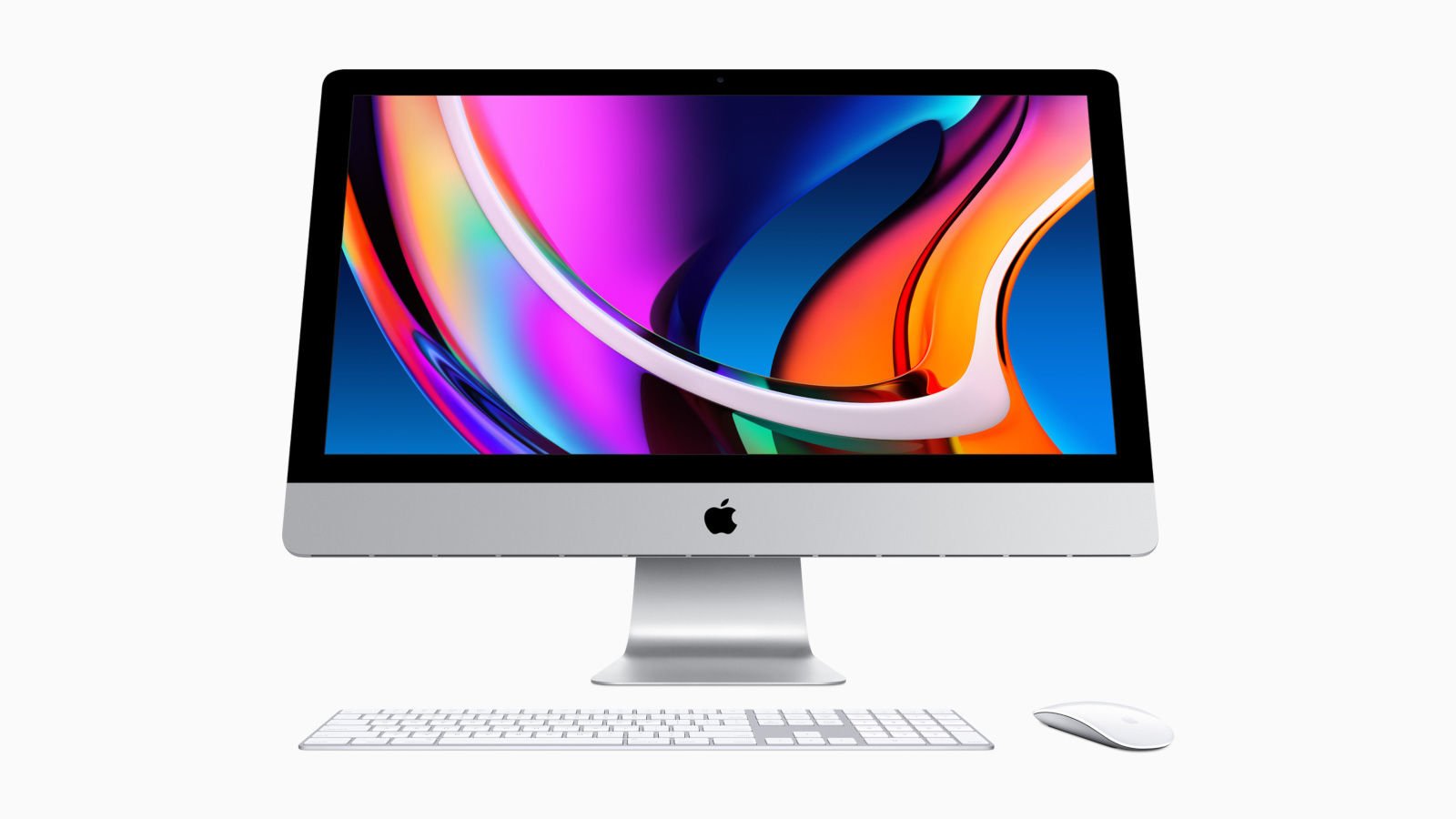

Last updated: March 2019 (SSDs as standard since August 2020)
Price: From £1,099/$1,099
Here are the latest 2.3GHz dual-core iMac deals:
Here are the latest 3.6GHz quad-core iMac deals (£1,299/$1,299):
Here are the latest 3.0GHz 6-core iMac deals (£1,499/$1,499):
Apple’s iMac is probably its most famous Mac. First introduced in 1998 and causing shockwaves in personal computing, over the years the iMac has lost its old bulky CRT monitor, and slimmed down. Now it is incredibly thin, but the whole computer is still concealed behind that gorgeous display (there is no tower to hide away under your desk).
The iMac design is still what it is most noted for, but after more than a decade looking the same there are calls for Apple to redesign the iMac – and hopefully it will in 2021 (read about the 2021 iMac).
There are two sizes of iMac, the 21.5in model and the 27in iMac which we will discuss below. For more information about how the two compare read: 21.5 vs 27in iMac.
Who is the 21.5in iMac best for?
It’s a desktop Mac, so the 21.5in iMac is obviously best for someone who doesn’t mind being tied to their desk. Or perhaps you already own a laptop and need a more powerful machine. The great thing about buying an Apple computer is that because everything is tied to your iCloud account all your Safari bookmarks, photos, messages, iCloud documents and applications will be available to you on all of your Macs.
Perhaps the big screen appeals – sure the 27in iMac has a bigger and better screen, but 21.5in is still bigger than the screen on a 16in MacBook Pro. Of course if it’s a big screen you want you could just plug your Mac into a separate display.
The type of person for whom the 21.5in iMac is ideal will be different to the type who would require a 27in iMac (which we discuss next). The 21.5in iMacs are great options for most general use, although they are the only non pro Macs to offer discrete GPUs, so they could appeal to creative pro users and gamers.
One thing to note: We would steer you away from the entry-level model as it’s not been updated since 2017 (other than the inclusion of an SSD as standard back in August 2020). It lacks the Retina display as well as only offering Intel graphics rather than the discrete Radeon Pro graphics card offered by the rest of the range.
21.5in iMac specifications
The newest 21.5in iMacs still use the 8th generation Intel processors and haven’t been significantly updated since 2019 (other than the provision of SSDs as standard across the range since August 2020).
There is an even older iMac still on sale – the entry-level 21.5in iMac was last updated in 2017 and costs £1,099/$1,099. It may appeal, but note that it lacks a Retina display and features a 7th-gen dual-core processor and Intel Iris Plus Graphics. It’s the lowest-spec machine Apple sells and we don’t recommend buying it.
For another £200/$200 you can plump for a faster 8th-gen 3.6GHz quad-core i5 processor with Radeon Pro 555X graphics and the 4K Retina display.
For a further £200/$200 you can go up to six cores. The top-of-the-range 21in iMac offers an 8th-gen 6-core i5 processor and Radeon Pro 560X graphics. It costs £1,499/$1,499.
£1,099/$1,099 21.5in iMac:
2.3GHz Dual-Core i5 Processor (Turbo Boost to 3.6GHz)
256GB SSD
8GB RAM
Intel Iris Plus Graphics 640
£1,299/$1,299 21.5in iMac:
3.6GHz Quad-Core i3 Processor
256GB SSD
8GB RAM
Radeon Pro 555X with 2GB of GDDR5 memory
£1,499/$1,499 21.5in iMac:
3.0GHz 6-Core i5 Processor
256GB SSD
8GB RAM
Radeon Pro 560X with 4GB of GDDR5 memory
The iMacs offer an SDXC slot, USB slots, 802.11ac Wi-Fi, and Ethernet. All the models feature Thunderbolt 3/USB-C ports; there are also four USB 3 ports, which will work with the older USB-A standard if you have old peripherals.
Should you buy an iMac now or wait?
The 21.5in iMac range wasn’t significantly updated in 2020 – it merely gained SSDs as standard (which is great, but it’s not a new processor). We expect that Apple will be focusing on the 21.5in iMac in early 2021, with that model being the next Mac to gain an M1 processor. Judging by the introduction of the M1 chip on the MacBook Air, Mac mini and MacBook Pro we think that this will be worth the wait.
If the new processor isn’t a good enough reason to wait for an update, we are also hearing that a redesign could be in the works too – with a 23in iMac in the pipeline.
27in iMac
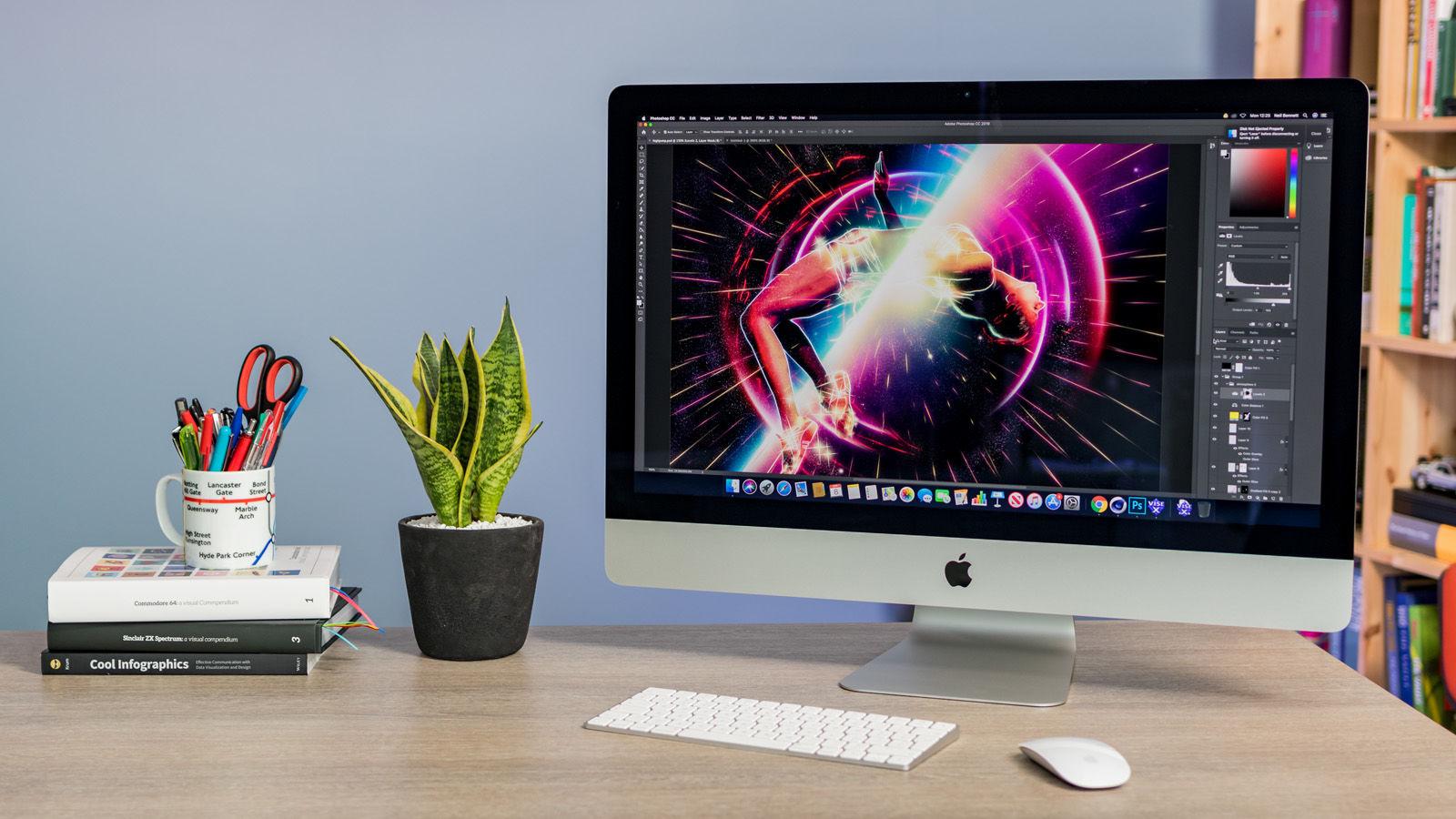

Last updated: August 2020
Price: From £1,799/$1,799
Here are the latest 3.1GHz 6-core iMac deals:
Here are the latest 3.3GHz 6-core iMac deals (£1,999/$1,999)
Here are the latest 3.8GHz 8-core iMac deals (£2,299/$2,299)
The 27in iMac is a completely different beast to the 21.5in model, with faster 10th generation processors and better graphics cards. The bigger 5K display is also a bonus.
Other than that the design is identical to the 21.5in model, with a few differences (for example the RAM is easier to update in the 27in model via a hatch on the back of the screen).
Who is the 27in iMac best for?
The bigger iMac is for professionals who need a powerful Mac. It’s unlikely that the choice will be between the 21.5in iMac and the 27in iMac, but if it is read which iMac. The choice will probably be between the 27in iMac models, the 16in Retina MacBook Pro, and the iMac Pro (discussed below).
The 27in iMac is ideal for graphic design, or those who work with video and images. It’s also great for gaming. The 16in MacBook Pro is a good match, but a 16in screen is no match for 27in. We compare the 16in MacBook Pro and the 27in iMac separately.
The iMac Pro is even faster, but it’s also a lot more expensive. For more information on that comparison, read iMac Pro vs iMac.
27in iMac specifications
The 27in iMac range was last updated in August 2020 with new 10th generation processors from Intel.
The 27in iMacs also offer i5 processors, but this is bumped to an i7 in the most expensive of the base configurations (you can select an i9 as a further customisation). The processors in the 27in iMacs are all at least 6-core, so you can expect plenty of power; the top model is 8-core, and you can customise up to 10-cores if you’ve got the cash to spare.
The entry-level 27in iMac features a 10th-gen 3.1GHz 6-core i5, 8GB RAM, Radeon Pro 5300 graphics with 4GB video memory and a 256GB SSD. And like all the bigger models it comes with a 5K display with a resolution of 5120 x 2880. This entry-level 27in iMac is £1,799/$1,799.
For £200/$200 more we move up to the mid-range option, with a 10th-gen 3.3GHz 6-core i5, 8GB RAM, the same Radeon Pro 5300 graphics and a larger 512GB SSD. Total price: £1,999/$1,999.
The top-of-the-range iMac, which costs £2,299/$2,299, goes all the way up to Intel’s 10th-gen i7, clocked at 3.8GHz and equipped with 8 cores. You also get 8GB RAM as standard, Radeon Pro 5500 XT graphics with 8GB video memory, and a 512GB SSD. Browse the 27in iMacs on Apple’s store.
The line up looks like this:
£1,799/$1,799 27in iMac:
3.1GHz 6-Core i5 Processor (Turbo Boost to 4.5GHz)
256GB SSD
8GB RAM
Radeon Pro 5300 with 4GB of GDDR6 memory
£1,999/$1,999 27in iMac:
3.3GHz 6-Core i5 Processor (Turbo Boost to 4.8GHz)
512GB SSD
8GB RAM
Radeon Pro 5300 with 4GB of GDDR6 memory
£2,299/$2,299 27in iMac:
3.8GHz 8-Core i7 Processor (Turbo Boost to 5.0GHz)
512GB SSD
8GB RAM
Radeon Pro 5500 XT with 8GB of GDDR6 memory
Should I buy 27in iMac or wait
Now is the time to buy a 27in iMac – Apple gave these models a substantial specs upgrade in August 2020.
That’s unless you want to wait for Apple’s new M1 processor to come to the 27in iMac. That could happen at some point in 2021.
iMac Pro


Last updated: December 2017
Price: From £4,999/$4,999
Here are the latest iMac Pro deals:
Apple issued a big mea culpa to creative professionals in 2017, acknowledging that the 2013 Mac Pro didn’t cut the mustard: problems with the thermal design apparently meant it was very difficult to upgrade. The company assured users that a new Mac Pro was on the way and it announced a new product called the iMac Pro in the meantime.
The iMac Pro features a thoroughly redesigned thermal system, and ran without slowdowns or significant fan noise when we stressed the GPU to 91 degrees Celsius.
It’s also immensely powerful – the most powerful Mac so far, and one that smashed every speed and graphics benchmark we put it through – and rather beautiful to look at: it’s the same elegant design as the 27in iMac, but it’s Space Grey. The new Space Grey peripherals look great too.
Who is the iMac Pro best for?
The iMac Pro is for creatives and other people who need a super-powerful Mac: video and photo editors, 3D modellers, VR devs, music producers.
For the past few years those users have been migrating to the iMac instead of the Mac Pro, so Apple felt it should just go with it, and give the iMac a pro-targeted revamp.
If your requirements are even higher than could be satisfied by this beast, you’ll might want to plump for the new Mac Pro, but that machine is so extremely powerful and astronomically priced that a souped-up iMac Pro may well be the best fit for you.
iMac Pro specifications
The iMac Pro is undoubtedly powerful, althoguh in the time since its introduction the 27in iMac has been closing the gap, and the Mac Pro has arrived.
There are a lot of different options available for the iMac Pro, from the number of cores to the graphics options. Processors up to 18 cores are available, you can get up to 256GB of RAM and up to 4TB of flash storage. You can upgrade the Vega 56 graphics card to a Vega 64 or Vega 64X. If you go all-in with every upgrade and extra it’s possible to spend almost £14,500/$14,500 though.
Here’s the spec for the standard iMac Pro:
£4,999/$4,999 27in iMac:
3.0GHz 10-Core Xeon W Processor (Turbo Boost to 4.5GHz)
1TB SSD
32GB RAM
Radeon Pro Vega 56 with 8GB of HBM2 memory
Should I buy an iMac Pro now or wait?
It’s been almost three years since the iMac Pro arrived, but Apple has made a few small updates since then; in March 2019 it added new configuration options for RAM and graphics, and in August 2020 it got a bump from 8- to 10-core in the base configuration.
Will Apple update it again? Sometimes we wonder if Apple will just retire the iMac Pro. But we imagine there are people out there relying on the Xeon powered iMac workstation who would be disappointed if Apple did that. We think that there will be another update the iMac Pro, potentially soon. Eventually Apple may add an Apple Silicon processor to the iMac Pro, but we think it will be a while before it does.
Mac Pro
Last updated: December 2019
Price: From £5,499/$5,499
If you want to buy a Mac Pro, here are the best deals:
The Mac Pro is Apple’s professional Mac with a price tag to match, starting at £5,499/$5,499. It’s a fully fledged workstation aimed at those who need the ultimate in power and have a huge budget.
Who is the Mac Pro best for?
Professionals who need extreme processing capability.
Mac Pro specifications
You can configure the 2019 Mac Pro anywhere from an 8- to a 28-core processor, with up to 1.5TB of RAM – yes, 1.5TB of RAM, not storage – and up to 4TB of SSD storage. It’s an astoundingly powerful machine.
Should you buy a Mac Pro now or wait?
The Mac Pro went on sale in December 2019. It’s unlikely that Apple will make a big change to the specs for a while (although another redesign is rumoured). It should be safe to buy one now and if you do it’s likely to last you a long time.


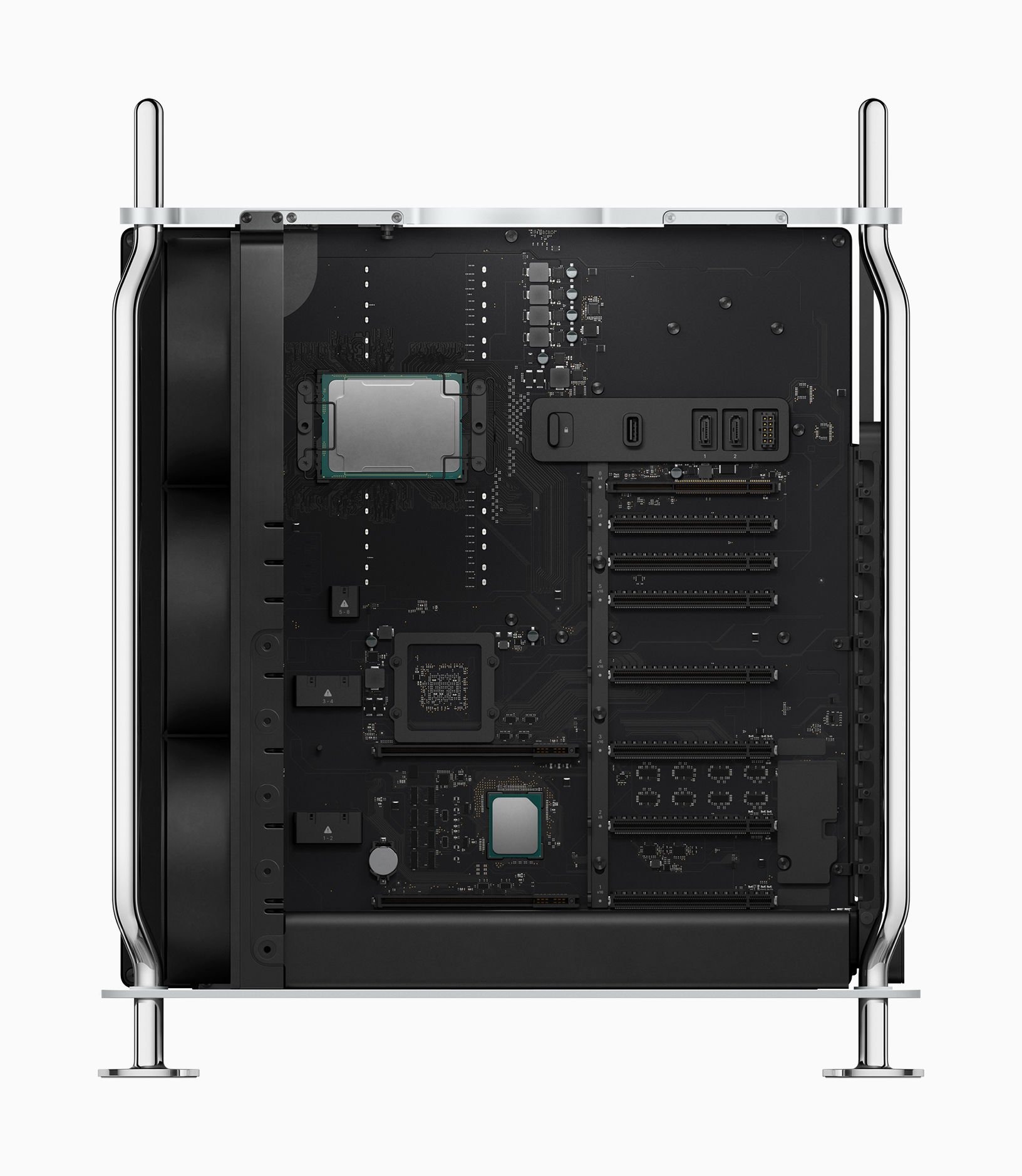
Comments are closed, but trackbacks and pingbacks are open.